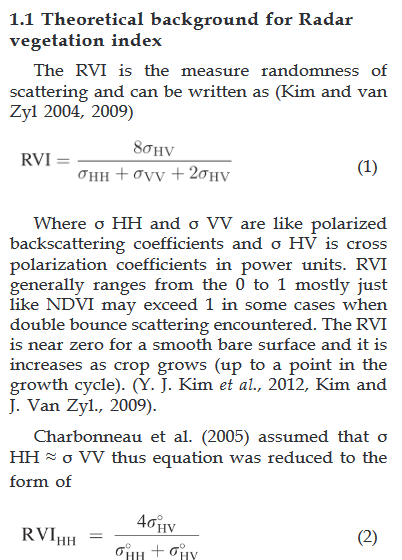the RVI needs quad-polarized data so it is not possible.
This publication argues that one option could be having HH/HV data alone as HH and VV are related:
Source: https://www.researchgate.net/publication/267020154_Radar_Vegetation_Index_as_an_Alternative_to_NDVI_for_Monitoring_of_Soyabean_and_Cotton
But as most of the Sentinel-1 data is VV/VH this isn’t an option either.
